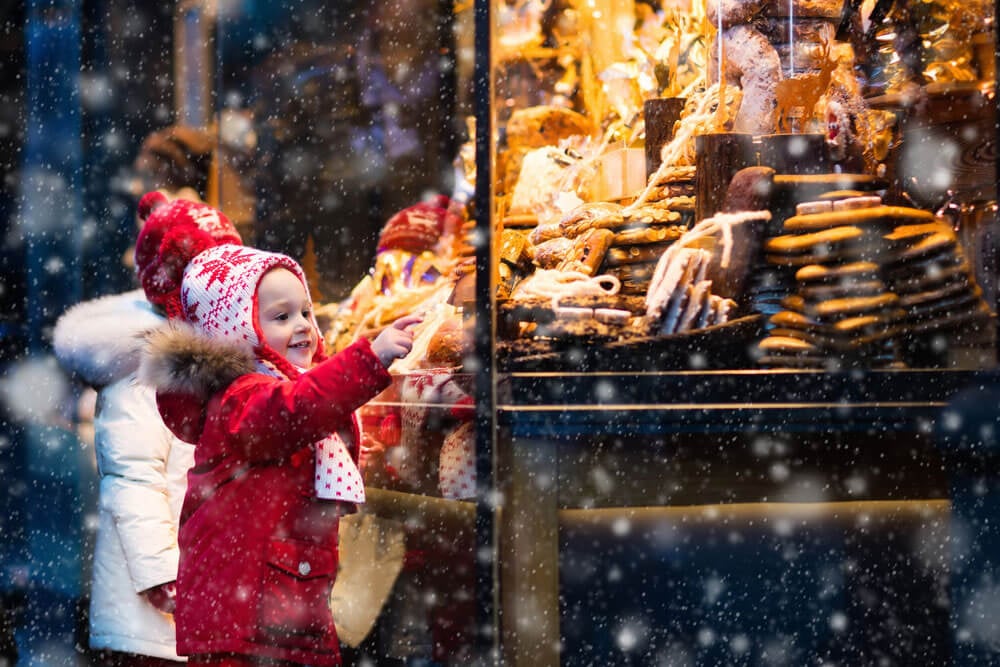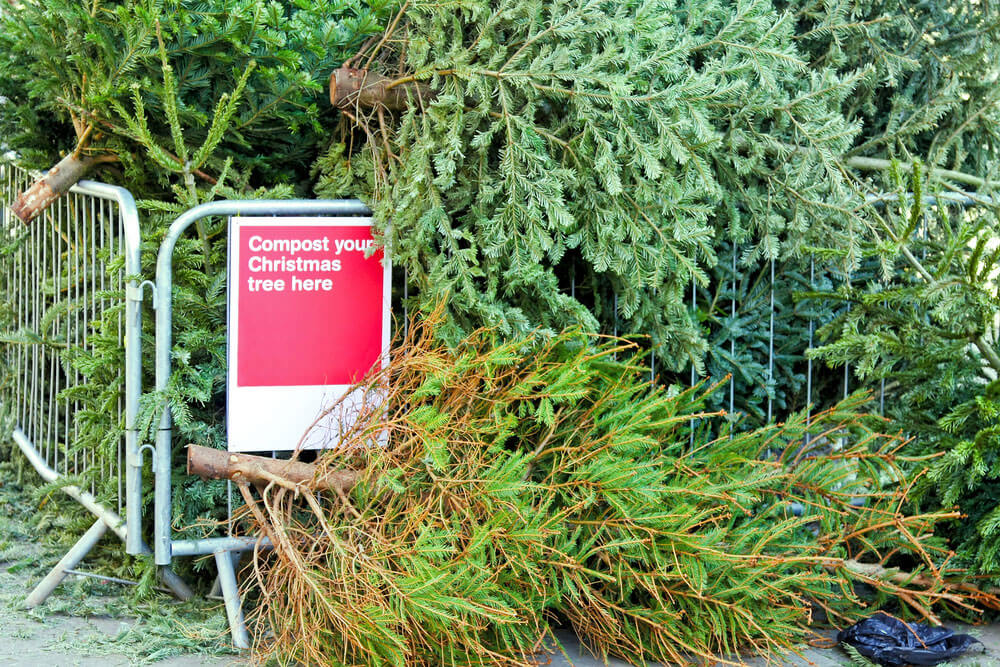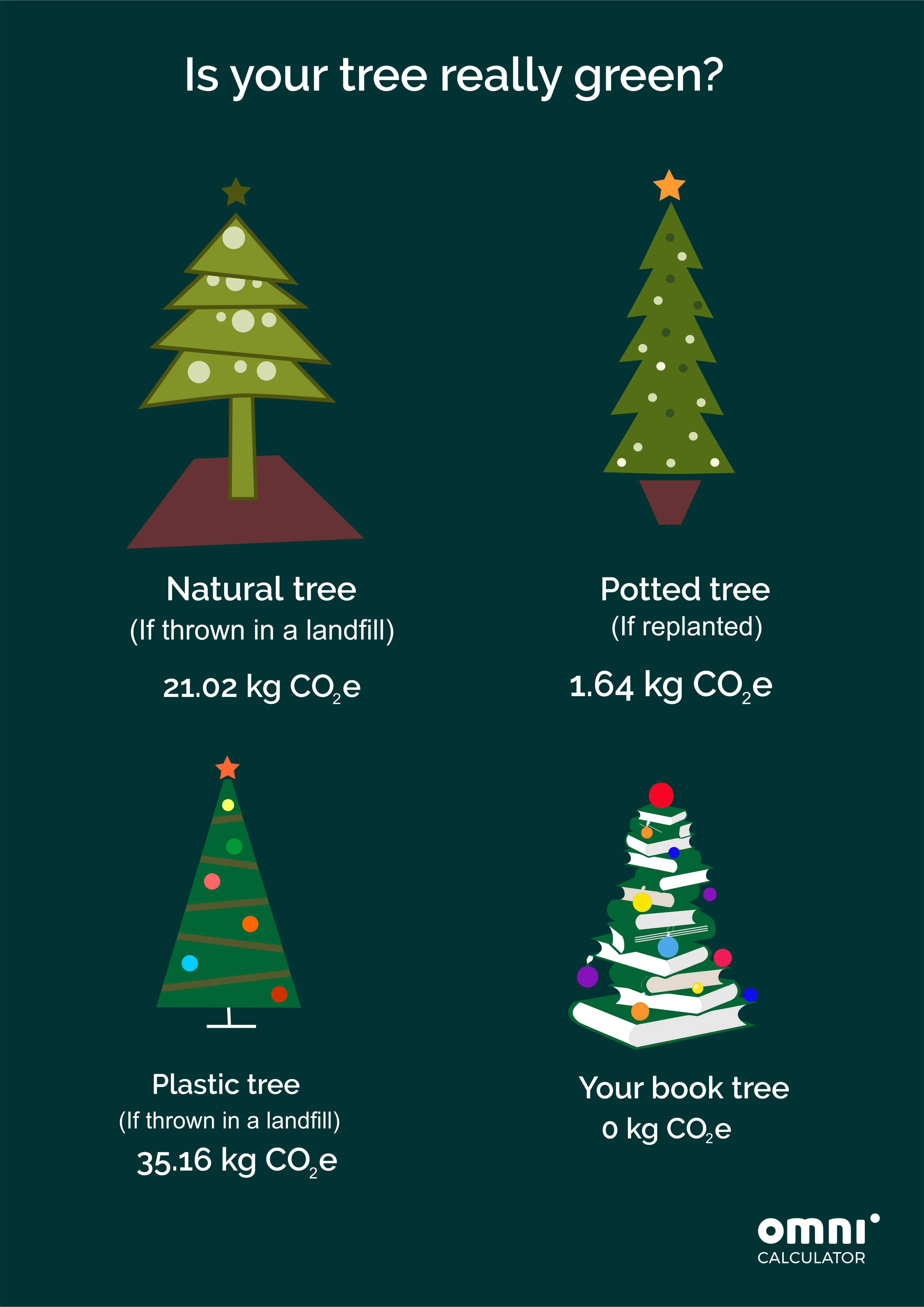Between Thanksgiving and New Year’s Day, the amount of household garbage in the United States increases by 25 percent, from 4 million tons to 5 million tons, including gift wrapping and product packaging. We also use more electricity just on holiday lights than some countries use in an entire year! All this waste is really unnecessary.
Here are twelve eco-friendly holiday tips to help you reduce your environmental footprint this holiday season.
- 1. Make Your Own Wrapping Paper (or Go Without)
- 2. Buy Energy-Saving LED Holiday Lights
- 3. Add Organic & Local Foods to Your Holiday Feast
- 4. Get a Chemical-Free Tree
- 5. Recycle Your Christmas Tree
- 6. Recycle Your Old Cellphone or Tablet
- 7. Offset Your Holiday Travel
- 8. Donate Your Time or Money to an Environmental Cause
- 9. Make Handcrafts & DIY Gifts
- 10. Give Experiential Gifts
- 11. Purchase Eco-Friendly & Locally Made Gifts
- 12. Stuff Stockings With Yummy, Natural Treats
1. Make Your Own Wrapping Paper (or Go Without)
Earth911 estimates that approximately 4.6 million pounds of wrapping paper is produced in the U.S. each year, and that about 2.3 million pounds—about half of it—ends up in landfills. And on top of all that, most wrapping paper and ribbon is produced in Asian sweatshops, and shipped from thousands of miles away, giving wrapping paper a pretty heavy environmental footprint!
A common mistake many people make around the holidays is putting all their wrapping paper, tissue, ribbons, etc. into the recycling bin. Unfortunately, if your wrapping paper is metallic, has foil or glitter decorations on it, or has a texture to it, it is not recyclable. Including it in your recycling bin with other paper products could make an entire load unrecyclable.
What a shame so much water, oil and trees are wasted every year solely to produce something that exists only to be used once, torn off and then thrown in the garbage. Instead of store-bought wrapping paper, get creative and try:
- white or brown craft paper (Have your kids decorate it for a personal touch!)
- old maps
- the comics section of your local newspaper
- a pretty scarf or bandana, furoshiki-style
- a useful cloth item that is a gift in and of itself
- recycled cloth bags from Amazon or other retailers
You could even go without wrapping your gifts altogether. A Small Footprint Family Facebook fan recently told me that at her home, she hides all the unwrapped presents around the house, and holds a holiday scavenger hunt for the kids to find them. What a fun, clever, low-waste idea!
But if you must buy wrapping paper, Wrappily offers lovely holiday wrapping papers made from 100% recyclable and compostable newsprint. You can also get holiday cards (and other cards, too!) made from 100% recycled paper at Paper Culture.

2. Buy Energy-Saving LED Holiday Lights
Thanks to technology, you can now decorate your house with LED lights that use 80 percent less energy than conventional holiday lights, which will greatly reduce your holiday electricity bill if you’re running multiple strands of lights for several hours a day. (Add a timer, and you’ll save even more!)
Not only do LED holiday lights cost pennies to run compared to incandescent holiday lights, they also have the following advantages:
- LEDs are much cooler than incandescent lights, reducing the risk of fire or burnt fingers. Unlike incandescents, they get more efficient as temperatures drop.
- LEDs are made with epoxy lenses, not glass, which are much more resistant to breakage. With care, LED holiday lights can last for as many as 50,000 hours of use. And when one bulb does go out, the rest of the string stays lit!
- Unlike incandescent holiday lights, you can often connect up to 25 strings of LED lights end-to-end without overloading a wall socket. And because LEDs use so much less power than filament lights, there are varieties that can be run on batteries or small solar panels, saving you even more money.
According to the U.S. Department of Energy, if everyone replaced their conventional holiday light strings with LEDs, the energy cost savings would be $850 million each year, and 9.9 billion pounds of annual greenhouse gas emission would be prevented. The savings would be equivalent to the emissions from 940,000 vehicles!
LED lights are affordable and available online and at many major retailers. And, if you put your lights on a timer, you can save even more money!

Why Are Lead and PVC Used in String Lights?
Both lead and PVC are used in almost all string lights (LED and incandescent) to insulate the wiring, retard fires and decrease the cracking and disintegrating that comes with age. String lights can also contain antimony, arsenic or cadmium as insulators and fire retardants, too—all toxic heavy metals you don’t want to touch or inhale.

While these toxins are impossible to entirely avoid, you can find less toxic string lights. Look for string lights that are RoHS compliant and free from Prop 65 warning labels.
In order to be RoHS (Restriction of Hazardous Substances) compliant, a product has to have less than 1000 ppm (.1%) of lead in it. RoHS compliant lights must also have low levels of cadmium, mercury and phthalates. So although RoHS compliant lights are not completely lead- and toxin-free, they generally are much safer compared to other, non-RoHS brands.
If you can’t find RoHS compliant, low-toxin lights, be sure to keep your string lights away from children and pets, wear gloves, and wash your hands thoroughly after installing them.
- Here’s a store full of RoHS compliant holiday lights.
- This brand of string lights is also RoHS compliant.
3. Add Organic & Local Foods to Your Holiday Feast
Make your holiday feast even more vibrant by supporting local family farmers and food producers who sustainably produce meat, vegetables and seasonal treats in your area.
A local, sustainably farmed roast or ham is much better for the environment than factory farm meat produced 1,000 miles away. Not only does local, organic food taste better, but you’ll also be doing your part for your community and the planet too.
Here’s where to find an organic turkey or humane ham and local vegetables for your holiday dinner.

4. Get a Chemical-Free Tree
As people learn more about living green and healthy, demand is on the rise for Christmas trees that are not covered in chemicals. Here’s what you need to know:
Live Christmas Trees
Studies have shown that cut or potted live trees are a much greener choice than an artificial tree. Living Christmas trees provide wildlife habitat, protect soil, moderate floods and drought, filter air and sequester carbon while they grow, which takes 6-8 years. Tree farms also provide local jobs and good livelihood in rural communities.
But unfortunately, some growers can use up to 40 different pesticides, as well as chemical colorants on their trees! The good news is that there are now a number of tree-farms that sell pesticide-free trees, so ask your local Christmas tree seller, or search for an organic tree farm near you.
The most eco-friendly holiday tree option is a potted, native tree that you can plant after the holiday season. You can find live, potted Christmas trees in any local nursery in your area. In California, New York, and the United Kingdom, you can even rent a potted Christmas tree, and they will take care of it for you between seasons!
If getting a potted tree is not possible, reduce your carbon footprint by purchasing a locally grown cut tree, and making sure it gets mulched or otherwise recycled—rather than put into the landfill—when the holiday is over.
Artificial Christmas Trees
Artificial trees can last many years if well cared for, which seems to make them a more sustainable choice, but they do have some very significant drawbacks. For example, you would have to keep your plastic Christmas tree for at least 10 years for it to have the same carbon impact as using a real tree each year.
Artificial trees also pose a big hazard to the environment, to workers and to consumers. Plastic Christmas trees are made mostly of polyvinyl chloride (PVC), a non-renewable petroleum product. In addition, large amounts of fossil fuels are required to manufacture and transport the plastic trees (usually from Asia), adding more greenhouse gases to the atmosphere.
PVC also contains phthalates, which accumulate in body tissues, and are linked to liver, lung and reproductive organ damage in mammals. Toxic heavy metals like lead, cadmium and tin are typically used in the production of PVC, and can also lead to environmental and health-related problems including nervous system damage, particularly in children.
Because artificial trees are flammable, many companies also apply flame retardants to them, which can cause reproductive toxicity, neurological toxicity, endocrine disruption, and cancer. In fact, there are so many toxins in artificial Christmas trees, that the labels warn you to avoid inhaling or touching any dust that may fall from the branches!
Artificial trees cannot be recycled at the end of their life, so they must be landfilled or incinerated. In the landfill, the non-biodegradable materials don’t really ever break down, while incineration causes plastics such as PVC to release dioxins and other carcinogens into the air.
So, if you do choose an artificial tree, make sure you take good care of it so you can use it for at least 10 years, and be sure to handle it carefully to avoid being exposed to its toxic dust.
You might also consider alternative trees, like book trees, wine bottle trees, or trees made from ornaments or lights.
5. Recycle Your Christmas Tree
Each year, 10 million cut Christmas trees end up in the landfill, where they produce methane, a potent greenhouse gas.
If you can’t chip your tree into mulch, cut it into firewood, use it in crafts, compost it, or feed it to your goats, you can still recycle your tree.
Over 4,000 U.S. cities alone offer programs to recycle your tree into mulch or wood chips. Some cities even use your old trees to do important environmental projects like streambank or dune stabilization. In some towns, you can even donate your tree to the zoo to feed the animals there.
Visit the National Christmas Tree Association or Earth911 to find a Christmas tree recycling program near you.

6. Recycle Your Old Cellphone or Tablet
Getting a new cell phone or tablet for the holidays? Not sure what to do with the old one? Each year, 130 million cell phones are thrown out, weighing approximately 65,000 tons. Recycling your old phone prevents hazardous elements like mercury, cadmium and lead from ending up in our landfills.
Now, you can drop off that old phone or tablet at any Staples store, take it to your local e-waste recycling center, send it to BigSky Recycling, or possibly trade it in with your cellphone carrier or one of the many buyback programs online.

7. Offset Your Holiday Travel
If you or your loved ones are traveling more than 100 miles this holiday season, try to reduce air travel whenever possible, and consider offsetting the fossil fuel pollution generated by your trip, no matter how you travel. These companies can help you get trees planted to reduce your impact.
- Terrapass – Provides carbon offsets for flying, driving, etc.
- CarbonFund – Provides a variety of carbon offset projects to choose from.
- Sustainable Travel – Provides a variety of ways to offset carbon emissions
You can also reduce your air travel footprint by flying like a N.E.R.D. When booking your flight, choose:
- New. Newer aircraft like the A320neo or Boeing 787-8 have 15% less fuel burn than older designs.
- Economy. More seats, and fewer unfilled seats, means lower fuel burn per passenger.
- Regular. Regional jets and very large aircraft with four engines are fuel intensive. Regular, medium-sized jets tend to be more fuel efficient.
- Direct. Fly direct, without layovers, where possible to reduce fuel burn due to circuitous routes.

8. Donate Your Time or Money to an Environmental Cause
Get into the holiday spirit by volunteering! There are countless ways to help improve your community—and the planet—from cleaning up a local river to helping inner city kids experience the outdoors for the first time.
Organizations and charities all over the country need your time and/or your money to make a difference, so you can have a great impact for a small amount of effort.
Here are my three favorite environmental charities to donate to during the holiday season:
- OneTreePlanted – One Tree Planted is a non-profit that enables individuals, businesses and schools to help with reforestation projects all over the world. They use your donation to empower local communities to grow and plant the saplings needed to restore forests after fires and floods, create jobs, build communities, and protect habitat for wildlife.
- Charity:Water – charity: water is a non-profit organization that brings clean and safe drinking water to the 785 million people worldwide that lack basic access to it. 100% of public donations go directly to fund clean water projects.
- Savory Institute – The Savory Institute teaches Holistic Planned Grazing to farmers, ranchers, and pastoralist communities across the globe in order to facilitate large-scale regeneration of the world’s prairies and grasslands through biomimicry and holistic management.

9. Make Handcrafts & DIY Gifts
There are so many ways to reduce your consumption impact when giving holiday gifts. DIY gifts can be as much fun to make and give as to receive. There are tons of ideas on Pinterest, but you are really only limited by your imagination.
Some homemade gift ideas include:
- homemade ornaments
- crafty picture frames with photos of loved ones in them
- homemade vanilla extract, or jams and preserves
- holiday cookies
- handmade soap
- knitted or crocheted items
- woodworking pieces

10. Give Experiential Gifts
One of the most memorable gifts to give is the gift of an experience. By giving gifts that can be experienced, you can minimize wrapping and shopping, and still give them something they’ll never forget.
Anything that allows your loved one to spend quality time experiencing something fun, new or interesting will make a gift sure to be cherished for years to come.
Some ideas for experiential gifts:
- tickets to a ball game, play or concert
- a trip somewhere interesting
- a year of zoo or museum membership
- passes to a local theme or water-park
- lessons, classes or a workshop
- a bucket-list experience, like sky-diving or whale watching
- a special homemade meal, massage or “spa day” with you
Experiential gifts are highly personal, and are often best enjoyed when shared between both the giver and the receiver, so you can build lasting memories together.

11. Purchase Eco-Friendly & Locally Made Gifts
If you choose to purchase retail gifts, choose products that come in minimal packaging, are made from sustainable materials, and can be easily recycled. You can also choose gifts that help people live more sustainably, like a compost bin or a reusable water bottle.
Related: 24 Unique Gifts for Gardeners
Shop Local
Now more than ever, it’s important to support your local small businesses and retailers by shopping for gifts in your hometown. This helps your local Main Street to survive, and provides local jobs. If you’re not sure what to get, purchase gift certificates from area shops, restaurants and food purveyors.
Whenever you can, try to consolidate trips so you use less gas during your holiday shopping.
Eco-Friendly Online Shopping
Online shopping reduces the amount of time you spend driving your car, but the carbon footprint from transporting all those purchases can be high. In addition, the packaging can be an enormous waste.
According to a study by MIT that compared brick-and-mortar shopping to online shopping, buying online typically has a lower carbon footprint than driving around—except when online shoppers choose 2-day or faster delivery.
Whenever possible, plan ahead to avoid 2-day or rush shipping. Opting for a slower shipping time gives the shipper time to schedule deliveries more efficiently. Try to consolidate shipments of multiple items when you can, and waive signature requirements (or use Amazon locker) to prevent multiple delivery attempts.
There are many online shops that specialize in sustainable and handcrafted gifts, from arts & crafts to clothing to household goods to fine jewelry, including:

12. Stuff Stockings With Yummy, Natural Treats
Stocking stuffers tend to be small, plastic trinkets that end up broken, lost or in the garbage by the end of January. Instead, honor an old-fashioned tradition and fill your stockings with yummy treats like dried fruit, nuts, clementines, candy, and homemade holiday cookies.
How are you being green this holiday season?
We Wish You a Peaceful Holiday and an Abundant New Year!
—The Small Footprint Family
This article was excerpted from my book Sustainability Starts at Home – How to Save Money While Saving the Planet. For more money-saving, planet-friendly tips, pick up a copy today!
Also featured on NPR’s Here and Now Show with Robin Young










